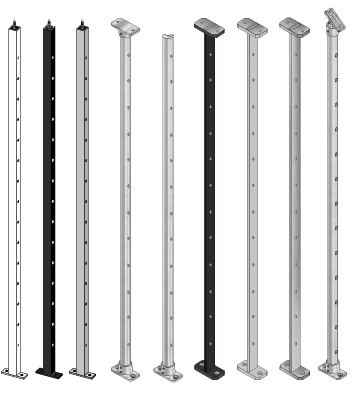Cable Railing DIY Success, Part 3
Cable Railing DIY Success, Part 1 discussed the basic rules of cable railing, pre-design considerations and material considerations. Cable Railing DIY Success, Part 2 talked about the selection of post and rail material and how they can be used to build a safe railing and match your budget.
In Part 3, we are going to discuss how cable stabilizers work and how they can be used.
Cable Railing Stabilizers
Cable stabilizers can be made of any material that is rigid and can be made to capture the cable midway between posts. A cable stabilizer is generally not structural, so its purpose is limiting to the amount of deflection we get from applying pressure to the cable. Generally speaking, a code enforcement office will apply pressure to a 4 inch ball or disk to test whether your cable spacing and deflection is safe. You do not want to fail that test as failed results are difficult to remedy. If you err on the side of caution it will serve you well.
If you have post spaced over 48 inches apart, you always need to use a stabilizer. If your posts are over 7 feet apart you, need an additional post. Never stack stabilizers (more than one per section) in an attempt to decrease your post count. You will create a dangerous situation.
Cable railing stabilizers come pre-made from several materials, with aluminum and stainless steel being the most popular. You can also make your own stabilizer from wood or other material as long as the strength and capture requirements are fulfilled.
